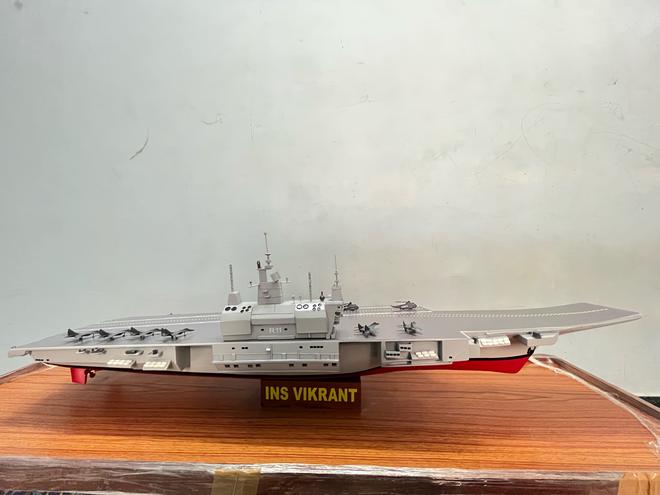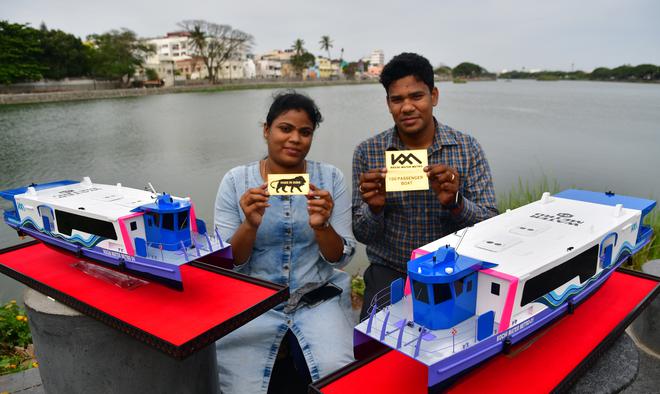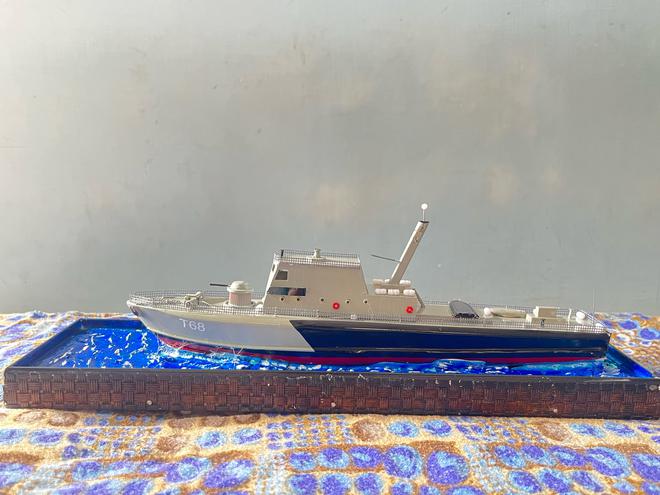Queenthunk Amalanathan’s interest in the intricate craft of building authentic scale models of naval ships began when he was studying at The American College in Madurai. In the last decade, he has handcrafted as many as 30 models of iconic ships and sailing boats including INS Vikramaditya, the flagship of the Indian Navy. Most of the models he has made are ‘seaworthy’ and he tests them by floating the vessels in waterbodies in and around his neighbourhood. A fleet of miniatures of the Kochi Water Metro carrier, the INS Vikrant, an indigenous aircraft carrier, and INS Viraat, the second Centaur-class aircraft carrier are some of the latest additions to his collection, among many others. “I travelled along with the three-feet-long INS Viraat on trains and cars while transporting it from Madurai to Mumbai. It now sits pretty at a retired Naval officer’s home in Pune,” says Amalanathan, who recently moved from Coimbatore to Madurai on work. “The retired veteran served as an aviator. He became nostalgic and excitedly explained to us the working of the aircraft carrier. He also motivated me to build more miniature models.”

Though the models are crafted in balsa wood as the base, he also upcycles materials like old telephone wires, broomsticks, discarded plastic sheets, and metal chains. “For crafting helicopter rotors, you need materials in less than 1mm thickness. I upcycled old X-ray sheets to achieve this. For INS Viraat, I also used aluminium sheets for the outer frame which was challenging. For the rotor extensions, I upcycled beads from chains used by my daughter. It’s a durable model, built from scratch.”
He picks the Kochi Water Metro model as a notable one from his collection. The award-winning Cochin Shipyard Ltd’s electric boat design for the Kochi Water Metro is unique, he says. “We followed the basic layout design, and added meticulous detailing including the doors, grills, the light buoys, and railing. The huge window covered in black shade is a highlight. While Naval ships use grey and red colour combinations, this carrier uses as many as seven colours. I used paint sprays, bell pins, foam sheets, acrylic...anything I could lay my hands on to achieve the finesse. I sourced keychains from Pudhu Mandapam near Madurai Meenakshi Amman temple to give a metal finish for the design.”

He insists that one has to learn the techniques and skills like drilling and sculpting to get started. “Ship modelling is tough. We have to collect as many images as possible, follow the blueprint design and build it step by step starting with the keel, followed by the body, the hull. Then, fill the gaps with wooden logs, the ballistic missiles...every ship is unique.”

Though the craft requires patience, Amal says building scaled up models helps one explore navigation, aviation, and hydro dynamics. Amal and his wife Advina Jerling have started IAS Mary Maritime Models company to offer hands-on training to students. “While aeromodelling has caught on in a big way this craft has no takers. The skill also has a career option in the State Government. In Tamil Nadu, we have just about six ship modelling inspectors. There is immense scope. It helps them stay focused.”
Amal’s miniature of INS Vikrant, an indigenous aircraft carrier is displayed at a private school in the city along with a one-feet-long memorabilia of INS Baratang, the patrol vessel of the Indian Navy. “Students can start off with lessons on basic understanding of a ship or an aircraft carrier by looking at a miniature. Eventually, it will motivate them to explore more.”
To know more, call 9791524682







